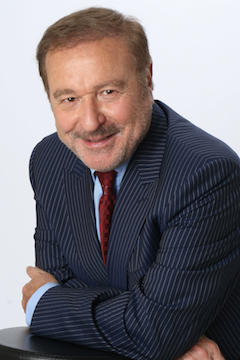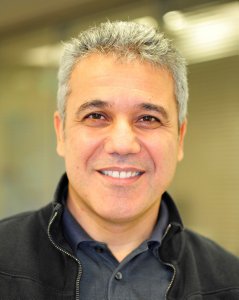First International Balkan Conference on Communications and Networking
Tirana, Albania, May 30-June 2, 2017
First International Balkan Conference on Communications and Networking
Tirana, Albania, May 30-June 2, 2017
Engaging the Balkan Region through Communication and Networking
Endorsed by the Minister of Innovation and the Academy of Sciences of Albania
Tutorials
 |
Ian F. Akyildiz Ken Byers Chair Professor in Telecommunications |
5G Roadmap: 10 Key Enabling Technologies
Time: Tuesday, May 30, 2017 - 9:00 - 12:00
Location: Protik Innovation Center
Abstract
The fifth generation (5G) mobile communication networks will require a major paradigm shift to satisfy the increasing demand for higher data rates, lower network latencies, better energy efficiency, and reliable ubiquitous connectivity. With prediction of the advent of 5G systems in the near future, many efforts and revolutionary ideas have been proposed and explored around the world. The major technological breakthroughs that will bring renaissance to wireless communication networks include (1) a wireless software-defined network, (2) network function virtualization, (3) millimeter wave spectrum, (4) massive MIMO, (5) network ultra-densification, (6) big data and mobile cloud computing, (7) scalable Internet of Things, (8) device-to-device connectivity with high mobility, (9) green communications, and (10) new radio access techniques. In this tutorial, the state-of-the-art and the potentials of these ten enabling technologies are presented. Furthermore, the challenges and limitations for each technology are treated in depth, while the possible solutions are highlighted.
Biography
I. F. Akyildiz is the Ken Byers Chair Professor with the School of Electrical and Computer Engineering, Georgia Institute of Technology, Director of the Broadband Wireless Networking Laboratory and Chair of the Telecommunications Group. He is the Editor-in-Chief of Computer Networks (Elsevier) Journal since 2000, the founding Editor-in-Chiefs of the Ad Hoc Networks Journal (2003), both published by Elsevier. Dr. Akyildiz is an IEEE FELLOW (1996) and an ACM FELLOW (1997). He received numerous awards from IEEE and ACM. Due to Google scholar, his papers received over 89+K citations and his h-index is 106 as of March 2017. His current research interests are in Nano-Scale Communications, 5G Cellular Systems, Software Defined Networking and Wireless Sensor Networks in Challenged Environments.
 |
Huseyin Arslan Professor |
Flexible Radio Access Beyond 5G: A Future Projection
Time: Friday, June 2, 2017 - 13:45 - 16:30
Location: Protik Innovation Center
Abstract
Today's wireless services and systems have come a long way since the rollout of the conventional voice-centric cellular systems. The demand for wireless access in voice and multi-media applications has increased tremendously. In addition to these, new application classes like extreme mobile broadband communication, ultra reliable and low latency communications, massive machine type communications, and Internet of Things have gained significant interest recently for 5G. The trend on the variety and the number of mobile devices along with the mobile applications will certainly continue beyond 5G, creating a wide range of technical challenges such as cost, power efficiency, spectrum efficiency, extreme reliability, low latency, robustness against diverse channel conditions, cooperative networking capability and coexistence, dynamic and flexible utilization of wireless spectrum. In order to address these technical challenges, 5G waveforms and radio access technologies (RATs) should be much more flexible. The current 4G systems rely on the orthogonal frequency multiple access (OFDM) waveform, which is not capable of supporting the diverse applications that 5G and beyond will offer. This is because the traffic generated by 5G and beyond is expected to have radically different characteristics and requirements when compared to current wireless technology. For 5G to succeed, numerous waveform alternatives have been explored to best meet its various technical requirements. However, none of the alternatives were able to address all the requirements at the same time.
During the standardization of 5G, one thing has become certain: there is no single enabling technology that can achieve all of the applications being promised by 5G networking. This will be even more pronounced beyond 5G. For this purpose, the concept of using multiple OFDM numerologies, i.e., different parameterization of OFDM based subframes, within the same frame has been proposed in 3GPP discussions for 5G. This concept will likely meet the current expectations in multiple service requirements to some extent. However, since it is almost obvious that quantity of wireless devices, applications, and heterogeneity of user requirements will keep increasing towards the next decade(s), the sufficiency of the aforementioned flexibility level remains quite disputable considering future expectations. Therefore, novel RATs facilitating much more flexibility are needed to address the aforementioned technical problems. In this tutorial, we will discuss the potential directions to achieve further flexibility in RATs beyond 5G. In this context, a framework for developing flexible waveform, numerology, and frame design strategies will be discussed along with sample methods in this direction. We will also discuss their potential role to handle various issues in the upper system layers.
Biography
Dr. Arslan (IEEE Fellow) has received his BS degree from Middle East Technical University (METU), Ankara, Turkey in 1992; MS and Ph.D. degrees in 1994 and 1998 from Southern Methodist University (SMU), Dallas, TX. USA. From January 1998 to August 2002, he was with the research group of Ericsson Inc., NC, USA, where he was involved with several projects related to 2G and 3G wireless communication systems. Since August 2002, he has been with the Electrical Engineering Dept. of University of South Florida, Tampa, FL, USA, where he is a Professor. In December 2013, he joined Istanbul Medipol University to found the Engineering College, where he has worked as the Dean of the School of Engineering and Natural Sciences. He has also served as the director of the Graduate School of Engineering and Natural Sciences at the same university. In addition, he has worked as a part-time consultant for various companies and institutions including Anritsu Company, Savronik Inc., and The Scientific and Technological Research Council of Turkey.
Dr. Arslan's research interests are related to advanced signal processing techniques at the physical and medium access layers, with cross-layer design for networking adaptivity and Quality of Service (QoS) control. He is interested in many forms of wireless technologies including cellular radio, wireless PAN/LAN/MANs, fixed wireless access, aeronautical networks, underwater networks, in vivo networks, and wireless sensors networks. His current research interests are on 5G and beyond, physical layer security, interference management (avoidance, awareness, and cancellation), cognitive radio, small cells, powerline communications, smart grid, UWB, multi- carrier wireless technologies, dynamic spectrum access, co-existence issues on heterogeneous networks, aeronautical (High Altitude Platform) communications, in vivo channel modeling and system design, and underwater acoustic communications.
Conference Series
You are visitor:
since November 10, 2016.